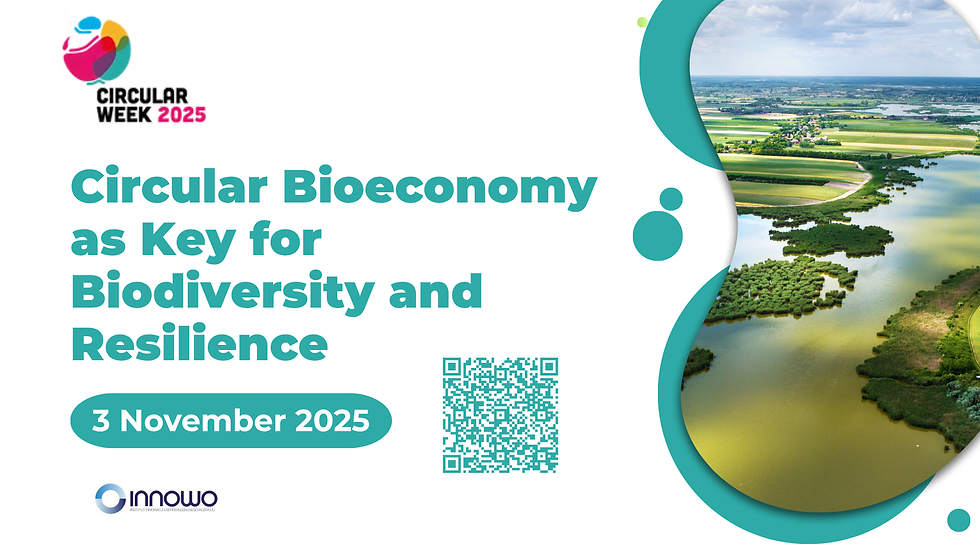Circular Bioeconomy - key for Biodiversity and Resilience
- INNOWO
- Aug 20
- 2 min read
Did you know that 75% of the Earth’s land surface and 66% of its marine environment have already been significantly altered by human activity? These alarming figures highlight how deeply we are interfering with the foundations of life on our planet. Biodiversity – the basis of our well-being and economy – is shrinking at a dramatic pace. Circular bioeconomy can be the key to reversing this trend, restoring biodiversity, and building economic resilience.
It is estimated that around 1 million species are at risk of extinction, and scientists warn that we are already witnessing the sixth mass extinction of species (IPBES, 2019). This crisis is not a distant phenomenon – Europe is experiencing it firsthand.
Since 1970, wetland areas have decreased by as much as 50%, and more than 28% of species unique to Europe and Central Asia are now endangered (IPBES, 2018). The UN recognises biodiversity loss, alongside climate change and environmental pollution, as one of the three greatest planetary crises facing humanity today.
Why does circular bioeconomy matter?
The key to reversing this trend lies in transforming our systems of production and consumption. Research shows that the food, construction, energy and textile sectors are responsible for nearly 90% of global pressure on biodiversity. This means they also hold the greatest potential for transformative change.
Circular bioeconomy is an approach that combines the principles of the circular economy with the responsible management of biological resources.
Through it, we can:
Reduce pressure on primary resources – by increasing resource efficiency, recycling materials, and extending product lifecycles.
Prevent pollution – by reducing waste generation, phasing out hazardous substances, and protecting both ecosystems and human health.
Source resources in a biodiversity-friendly way – focusing on regenerative practices and avoiding harm to natural systems.
These solutions allow us to build more sustainable patterns of production and consumption, which not only strengthen the economy but also directly benefit biodiversity and nature.
Circular Week 2025 - Let’s talk about the future together
These and many other aspects of circular bioeconomy will be the focus of the conference “Circular Bioeconomy as Key for Biodiversity and Resilience”, which will kick off Circular Week this November.
It will be a unique opportunity to meet experts, business leaders, and policymakers from across Europe, and to discuss how to put biodiversity-friendly solutions into practice.
👉 Register today and secure your place in this crucial discussion.
Because the future of our planet begins with the decisions we make today.




Comments